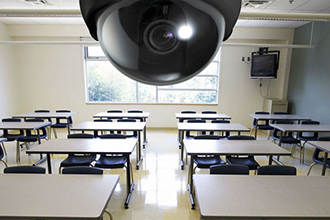On August 31, 2018, the Colorado Department of Public Safety, Division of Homeland Security and Emergency Management, released a Request for Proposal (RFP) for up to $29.5 million for schools to improve the security of public or charter school facilities.
On August 31, 2018, the Colorado Department of Public Safety, Division of Homeland Security and Emergency Management, released a Request for Proposal (RFP) for up to $29.5 million for schools to improve the security of public or charter school facilities.
These regulations were issued after passage of SB 18-269, which authorized the Executive Director of the Department of Public Safety to circulate rules that establish time-frames for submitting disbursement applications and awarding funds to eligible schools.
The regulations and time-frames can be viewed in the August Regulatory Report. While guidance on how schools may apply is sometimes easily explained in statutory or regulatory publications, how electronic security providers make these funds known to schools and how they procure the market potential is complex — and is likely new territory for many school officials and electronic security companies.
FUNDING NATIONWIDE
Thirteen (13) states, so far, have passed legislation providing some form of funding to enhance the security of schools through video surveillance, alarms, access control and numerous other means.
But, every state is different in the means of attaining funds and no statute provides guidance to potential vendors. So, where do you go if you want to help and your company has the infrastructure to provide the kind of security identified with enacted legislation?
STEP 1: BEST PRACTICES
A good place to start would be a complete review of the Electronic Security Guidelines that ESA first published in 2013 in the wake of the Sandy Hook Elementary School Shooting in Newtown, CT.
Subject matter experts were brought in from around the country to collaborate on this useful document, designed to help school officials get a handle on the myriad of factors they must consider to make their schools more secure. Your role would most likely begin with making sure this document is provided to decision makers within the school district, where in most cases these decisions are made.
STEP 2: LEGISLATION RESEARCH
The next order of business would be to read the enacted legislation within the state where you do business. There is no substitute for due diligence and this is one area where ESA will be of the most help. Soon, we will publish a matrix that includes all states that have passed school security legislation with infrastructure funding and provide links directly to the source documents.
In that matrix we will also provide the most detail possible on the responsible agency for disbursement, what entities are eligible for funding and any other details that may be provided in the bill language. There will often not be specific guidance such as that provided in Colorado with the promulgation of the rules mentioned above. In some cases, rules will be published by the responsible agency (such as that in Colorado). In the meantime, feel free to contact [email protected] for guidance in your state.
STEP 3: FINDING A CONTACT
Another inevitable variable is – who are the potential points of contacts for school districts? Every state establishes school districts in different ways, but for the most part, school districts are established through state statutes with locally elected school boards that hire a superintendent to run the day-to-day administration for the district.
They have similar statutory authority that towns and cities have in most cases. They are authorized to collect taxes, usually through property taxes, build schools, hire personnel and seek bond elections for capital improvement projects that generally involve building or renovating school buildings. There are also many states that created charter schools, which receive state funding, but provide specialized educational opportunities in a quasi-private school environment.
Charter schools are often included in these school security bills and the bureaucracy of charter schools is generally much less complex. It is a good opportunity for businesses that want to go directly to an administrator of a charter school to discuss school security funding in states where funding is available to charter schools.
But where can you go for initial contact to provide information about available funds or seek to bid for specific projects? All administrators or elected officials may not be aware of the available funding. Do you know your local school board member? This is a great starting point. If not, you may approach the procurement official, the head of school security for the district, or even principals of individual schools.
These are all persons who have limited decision making authority but will certainly know where you need to begin to help schools within your service area.
STEP 4: THE RFP PROCESS
You must also become familiar with the RFP process for school districts and get tapped into the publication of these documents as they are published. Except for very rare circumstances, public schools will seek bids for major school security projects and these documents will be published in some public record. Many schools are already aware of available funding and will seek grants, loans or whatever form of funding provided by the enacted legislation. And, once awarded will want to put specific projects out for bid.
There are many factors that will go into making schools more secure and a holistic approach is wise. School resource officers, mental health intervention, crisis identification and threat assessment teams all have value and should be deployed.
But, providing for the physical security and the infrastructure to protect students is paramount and the electronic security industry will play a major role in ending senseless acts of violence.
ESA will do all it can to help members help schools achieve the ultimate end of school violence.




